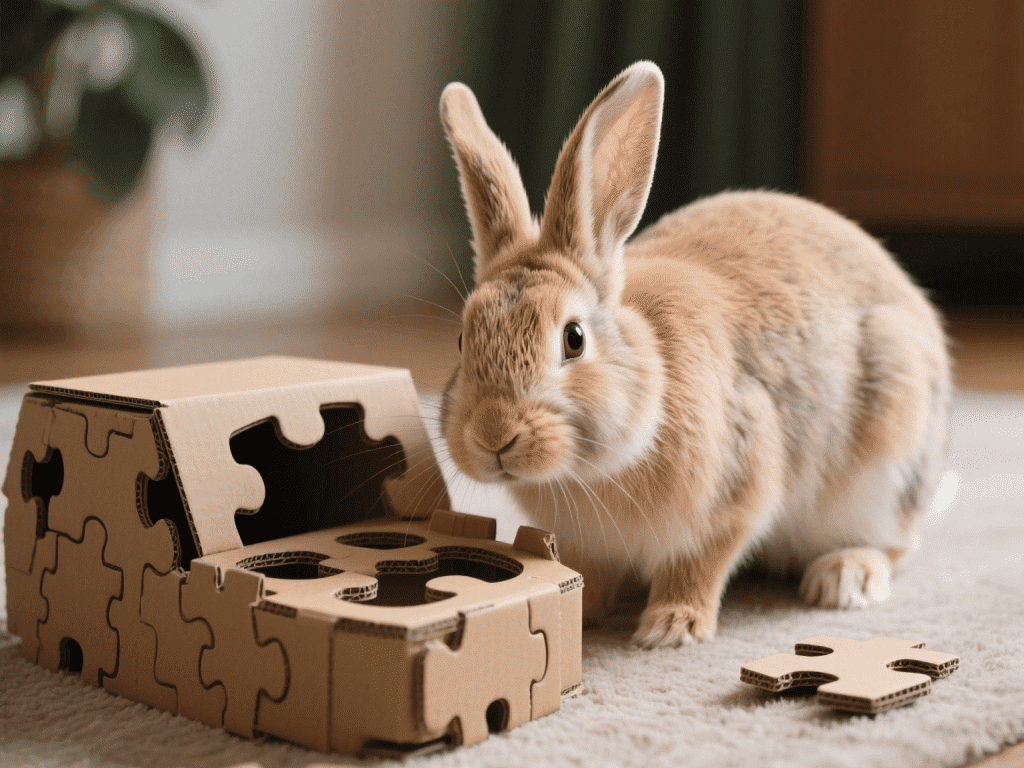
Enrichment Strategies for Indoor Rabbits: Keeping Boredom at Bay
Indoor rabbits thrive on a blend of environmental stimuli, chewable substrates, and social...

Desert tortoises require precise UVB and thermal gradients to metabolize calcium and maintain shell integrity. Drawing on my experience as a reptile husbandry specialist, this blueprint covers everything from wiring to hourly basking schedules.
Choose linear T5 bulbs with 10–12% UVB output. Position the lamp 12–18 inches above the basking spot, ensuring at least 75% of the tortoise’s shell receives direct UVA/UVB rays.
Establish a basking area at 95–100°F using a ceramic heat emitter and reflector dome. Create cooler zones at 75–80°F on the opposite side. Use digital thermostats with thermal probes for precise regulation.
Combine play sand, topsoil, and coarse coconut coir to allow digging. Provide a 6–8″ deep burrow box filled with moistened substrate to simulate natural retreat and regulate humidity.
Desert tortoises thrive under 12–14 hours of light during active seasons (spring/summer), reduced to 10–12 hours in fall. Automate lights on timers to mimic natural photoperiod shifts.
Maintain 30–40% ambient humidity. Mist the burrow box daily to achieve localized humidity of 60–70%. Monitor with digital hygrometers placed at ground level.
Dust food with a reptile‑grade calcium supplement (2:1 ratio with multivitamin) three times weekly. Offer cuttlebone and fresh grit in separate dishes to encourage natural gnawing.
Use a remote infrared thermometer to check basking platform and cooler zones multiple times daily. Note any reluctance to bask—could indicate illness or UVB degradation.
Replace UVB bulbs every 6 months; heat emitters as they lose wattage over time. Clean reflectors monthly to ensure maximal UVB output.
Install a battery‑backed timer and power supply for lights and heat emitters to cover 12–24 hours during outages. Keep portable ceramic heat emitters on hand for extended outages.
Keep a log of ambient temperature, humidity, UVB lamp hours, and tortoise behavior. Use data to fine‑tune conditions each season. Regular vet check‑ups ensure your reptile thrives under this tailored habitat.

Indoor rabbits thrive on a blend of environmental stimuli, chewable substrates, and social...

IntroductionAs our canine companions age, their oral health becomes increasingly vulnerabl...

IntroductionRabbit dental disease is common due to continuously growing teeth. If left unt...

IntroductionWhile “catching a cold” in pets differs from human colds, dogs and cats ca...

Recognizing and Treating Feline Eye Infections QuicklyCat eye infections escalate rapidly....

IntroductionCat owners increasingly seek ways to reduce their environmental footprint with...
Comments on "Comprehensive UVB and Heat Setup for Desert Tortoises: A Habitat Blueprint" :